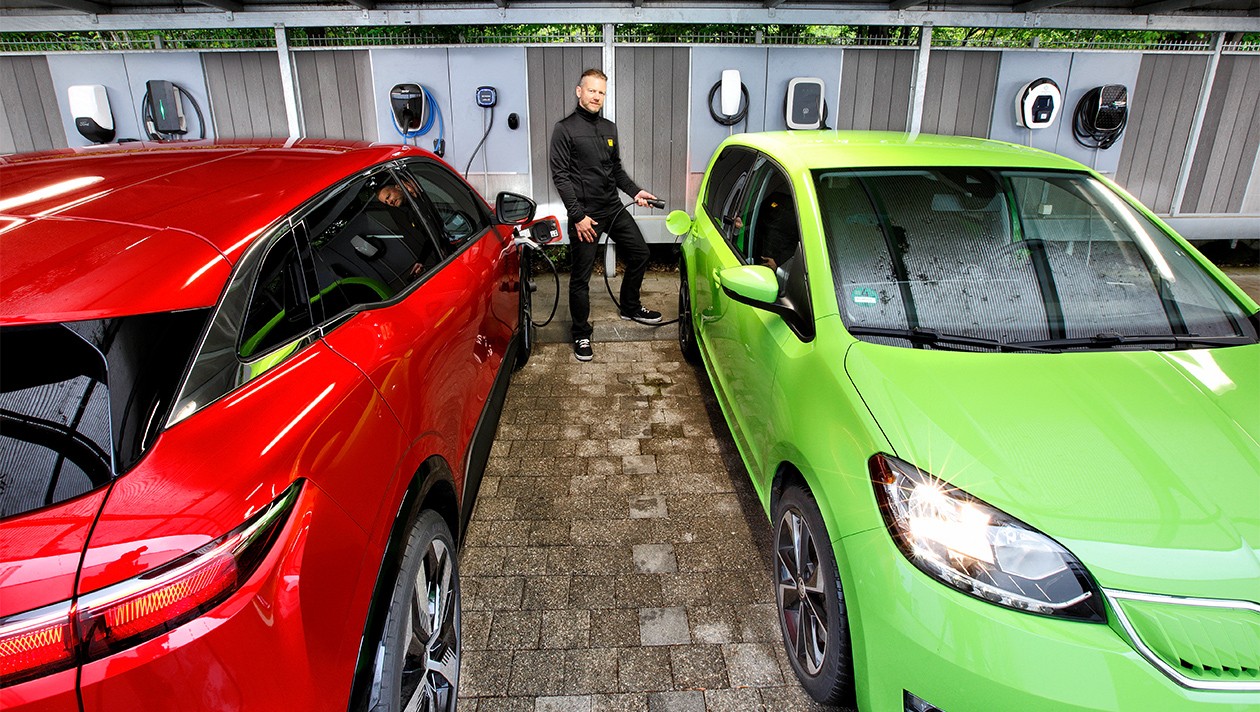In most cases, purchasing an electric car only makes sense if you can recharge it at home overnight using a wall box. The ÖAMTC and its partners have tested eight models.
This time devices were put to the test that bear the label of well-known car manufacturers. It is completely irrelevant whether the box and the e-car have the same logo: All charging units were tested with several vehicles, and a “preferential” approach to the company’s own brand could not be determined. Only two of the tested boxes, the Tesla and Peugeot models, are actually built under the umbrella of these car brands. The rest comes from automotive suppliers or wallbox specialists and is “only” branded accordingly. The good news: All of them received the rating “good”. “All models master the basic functions without difficulty. We also did not find any charging failures or safety problems, for example in the residual current switch-off devices, in any product,” explains ÖAMTC technician Florian Merker. “Very good” is not, however. And the differences are in the details, especially in the equipment. The test winner is one of the most expensive test winner is the Wallbox Pulsar Plus from Hyundai, which costs an average of 911 euros and is therefore in the upper price segment. In return, you get an exceptionally compact box with a very good app and an eye-catching display that shows the current charging status from afar. For example, the charging current can also be reduced using a mobile phone if consumption in the household is particularly high at the moment. “Not quite as successful: the cable management, which is all the more difficult the smaller the box is. And not insignificant in times of high electricity prices: the power consumption in stand-by mode could be lower,” summarizes the technician. The Mercedes-Benz Wallbox (990 euros) and the Peugeot ePro Full Wallbox (899 euros) are similarly convincing both of which have an integrated mobile phone modem with a SIM card slot and can therefore also go online where no LAN or WLAN is available, for example in many underground car parks. The 1000 euro wall charger from Volvo and the cheapest boxes in the test, the Gen3 Wall Connector from Tesla (500 euros) and the VW ID.Charger (570 euros) with an overall score of 2.2 ended up at the bottom of the rankings because of the missing app. The last place is also recommended. “VW is concentrating on the inexpensive ID . Charger solely for safe charging. You will look in vain for special functions and comfort equipment, and there is also no app. If you don’t want to do without it, you have to go to the also available ID. Grab Charger Connect,” advises Merker. But what you do get: good cable management and the lowest standby consumption. If that is enough, you are very well served with this inexpensive variant. The ranking of the candidates (all overall rating “good”): Hyundai Wallbox Pulsar Plus – overall grade 1.8 Mercedes-Benz Wallbox – 1.9 Peugeot ePro Full Wallbox – 1, 9 BMW Wallbox Gen. 3 – 2.0 Ford Connected Wallbox – 2.0 Tesla Gen 3 Wall Connector – 2.1 Volvo Garo Wallbox 32324230 – 2.1 Volkswagen ID. Charger – 2.2 Tips for purchasing a wall box Before you buy: Define exactly what equipment you want (e.g. app, electricity meter, statistics, electricity settings, access protection). A wall box may only be installed by a qualified electrician. Charging devices for electric vehicles must always be registered with the network operator and require approval for more than 11 kW. Pay attention to the enclosed declaration of conformity or at least one that can be downloaded from the manufacturer’s website. Good cable management including plug garage makes it easier to use the wall box in everyday life. A wall box with a socket should have a switchable charging cable lock so that the charging cable can also be secured against theft in a freely accessible area such as a carport. When integrating into a photovoltaic system, ensure that the interfaces are compatible
source site-13
